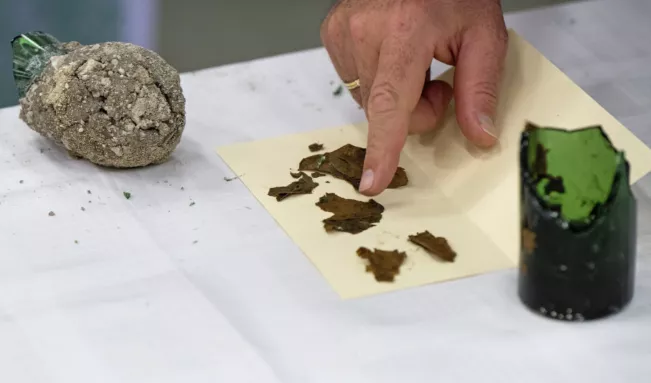Excavations led by the ELKH Research Centre for the Humanities have been completed in the undercroft of the Abbey of Tihany, where the tomb of its founder, King Andrew I, is located. Based on assumption bones of the royal family may also be found during the excavation of the undercroft.
Ágoston Takács, head of the excavations, said that the bones of the founder of the abbey or his relatives were likely to have been found in the undercroft near the tomb of King Andrew I. Norbert Jeromos Mihályi, the Prior of the Benedictine Abbey of Tihany, also recalled that Andrew I, the founder of the Abbey of Tihany, was laid to rest in the Royal Crypt in 1060. Gusztáv Balázs Mende, a paleoanthropologist at BTK, added that the son of Andrew I (1015-1060), David (1053/1055-1094?), is also buried here.
Many people have been buried in the crypt over the centuries, and recent research has led to the discovery of numerous human bones. Identifying the persons from the bones is not an easy task, but once the age and sex have been determined, it will become clear whether the remains of a member of the House of Árpád have been found. The DNA analysis of the bones is ongoing and the results are expected in September.
The excavation has resulted in the creation of a 'medieval square' with an original burial pit and traces of medieval floor remains. Work that began in April unearthed an 18th-century bust, as well as 16th- and 17th-century gunshot residues, coins, coffin nails and bronze mounts. A niche has also been found in the wall of the undercroft, which was probably an opening to the tomb.
Ágoston Takács recalled that excavations were also carried out in the King's Crypt in 1953, when a beer bottle was placed on the site as a time capsule. The time capsule was broken open and pieces of paper were found inside, but the text on them was not legible. When the excavations were completed in 1953, three coffins were placed in the nave, and this is where the burial remains, which are believed to be the earliest, were found.

The project entitled Multidisciplinary Research on the King's Crypt in Tihany was initiated and financially supported by the Eötvös Loránd Research Network. Eötvös Loránd University, Pázmány Péter Catholic University and the Laczkó Dezső Museum also contributed to the excavation of the almost 1,000-year-old undercroft.